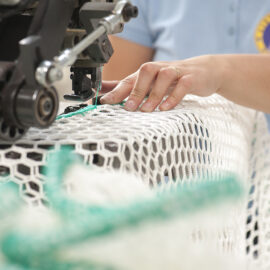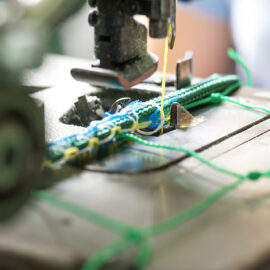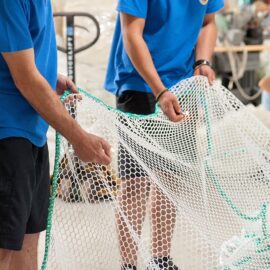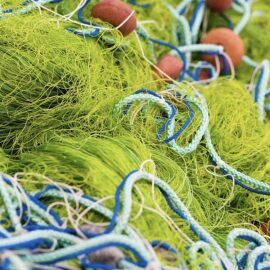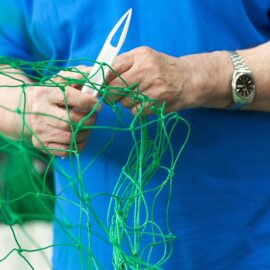We have been cooperating with Diopas, a net manufacturer based in Greece, since 2017. Not only are they offering their premises to house a collection point for ghost nets or waste nets we collect in the Northern part of the country, but they are also facilitating as a link between Healthy Seas and aquacultures, fishermen and their sports clients.
To understand more about the process of net manufacturing, we asked Ioakim Diamantidis, production manager of Diopas:
Q: How did the fishermen and fish farms react when you approached them to give you their waste nets for Healthy Seas?
Ioakim: Everyone was positive to the recycling and really liked the fact that they would be a part of such a great act.
Q: What are the reasons fishing nets are destroyed and lost or must be abandoned in the sea?
Ioakim: During the fish catch procedure, nets may be caught by mistake on a rock or on any other object in the sea bottom and that leads to the accidental loss of nets. It is worth mentioning that fish farms have fewer net losses than fishermen, as the nets in the cages of a fish farm don’t touch the bottom of the sea. Additionally, fish farms give larger quantities for recycling than fishermen, considering the nets that are used in the cage are thicker than the nets that fishermen use.
Q: Has Diopas recently made any innovations in designing and manufacturing of your nets?
Ioakim: All the raw materials that DIOPAS uses are fully recyclable. We are collaborating with research centers and are already discussing new projects that will have to do with innovations in designing and manufacturing fishing gear that can be traceable/recyclable/unharmful.
Q: What were nets made of in the past? When did fishermen start using plastic nets?
Ioakim: In the past, nets were made of cotton and other plants. Fishermen started using nylon and polyethylene nets from 1960 onwards.
Q: Are nylon nets popular with fishermen or do they choose other types of plastic nets? For what reason?
Ioakim: Nylon nets are the most popular nets for fishermen as nylon is a material that is durable and cheap at the same time.
Q: What are the types of nets most commonly used by fishermen in the Mediterranean/Greece? Which are deadliest and how are they different?
Ioakim: The types of nets that are most commonly used by fishermen in Greece are the gill nets and trawlers. Due to the fact that nets appear almost invisible underwater and this is why they are called ghost nets, they can easily become deadly as they continue floating in the sea. They lose their purpose but not their power.
Q: Ιs organic fish farming gaining territory in Greece? If yes, how is this effecting the fishing net production as far as the environmental measures that need to be accounted for?
Ioakim: Yes, organic fish farming is gaining territory in Greece. In case of organic fish farming, our nets are made of materials that are even more eco-friendly (they don’t contain copper oxide) and need less water consumption to be washed. Additionally, we use a different antifouling for impregnating the nets that is eco-friendly.




